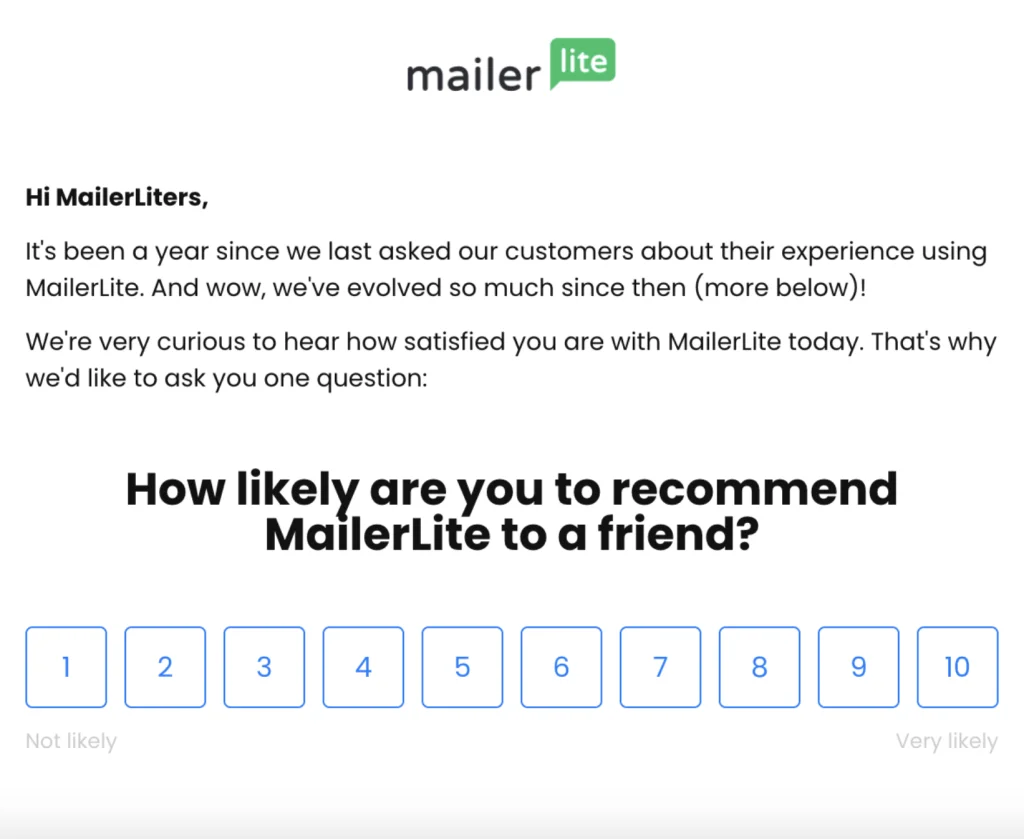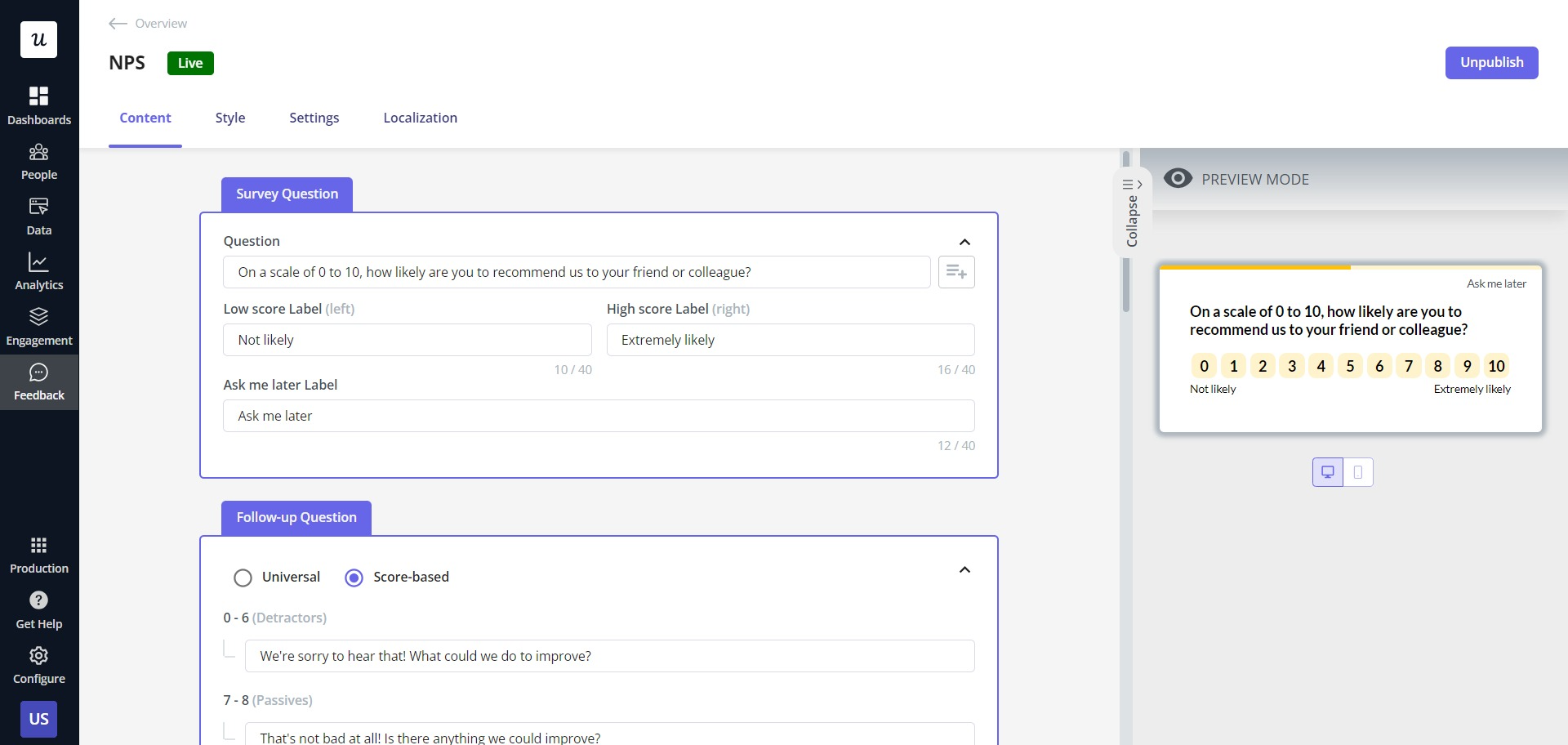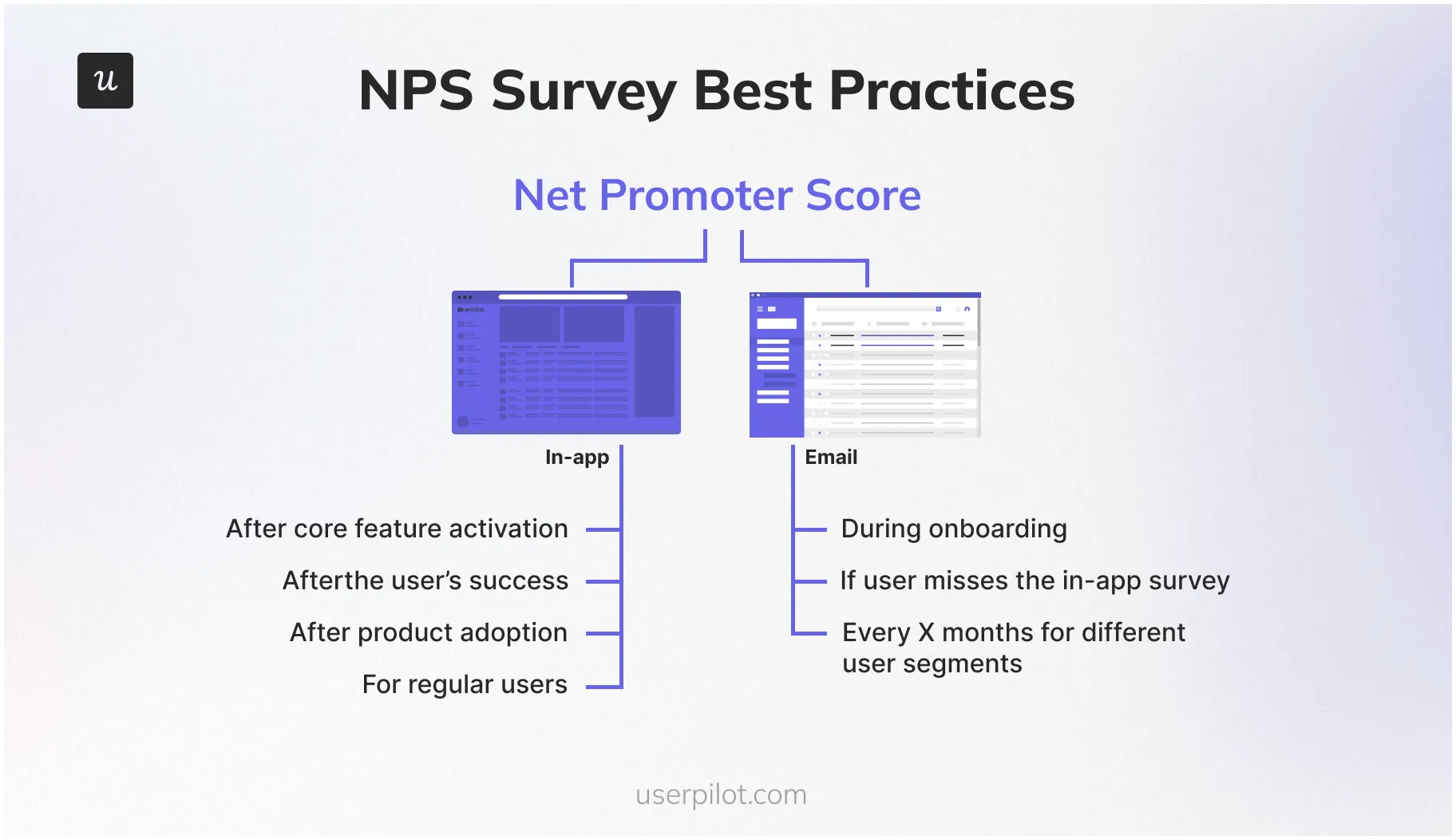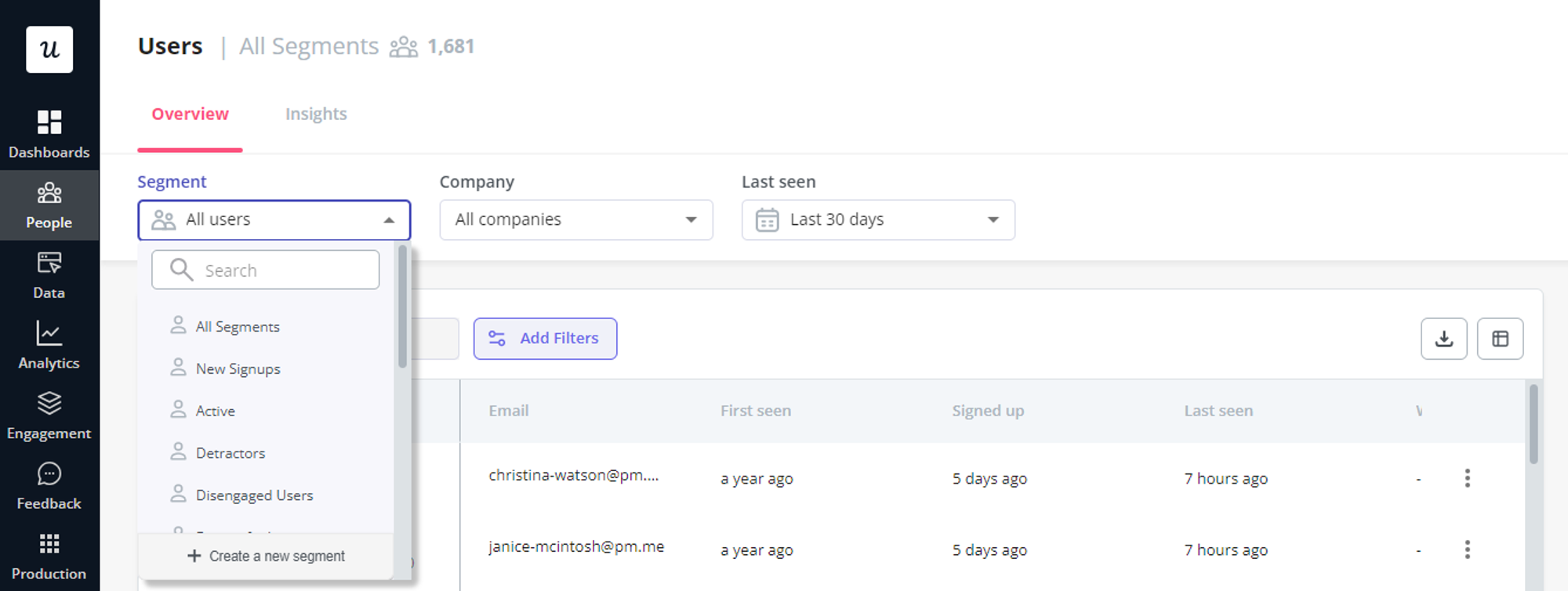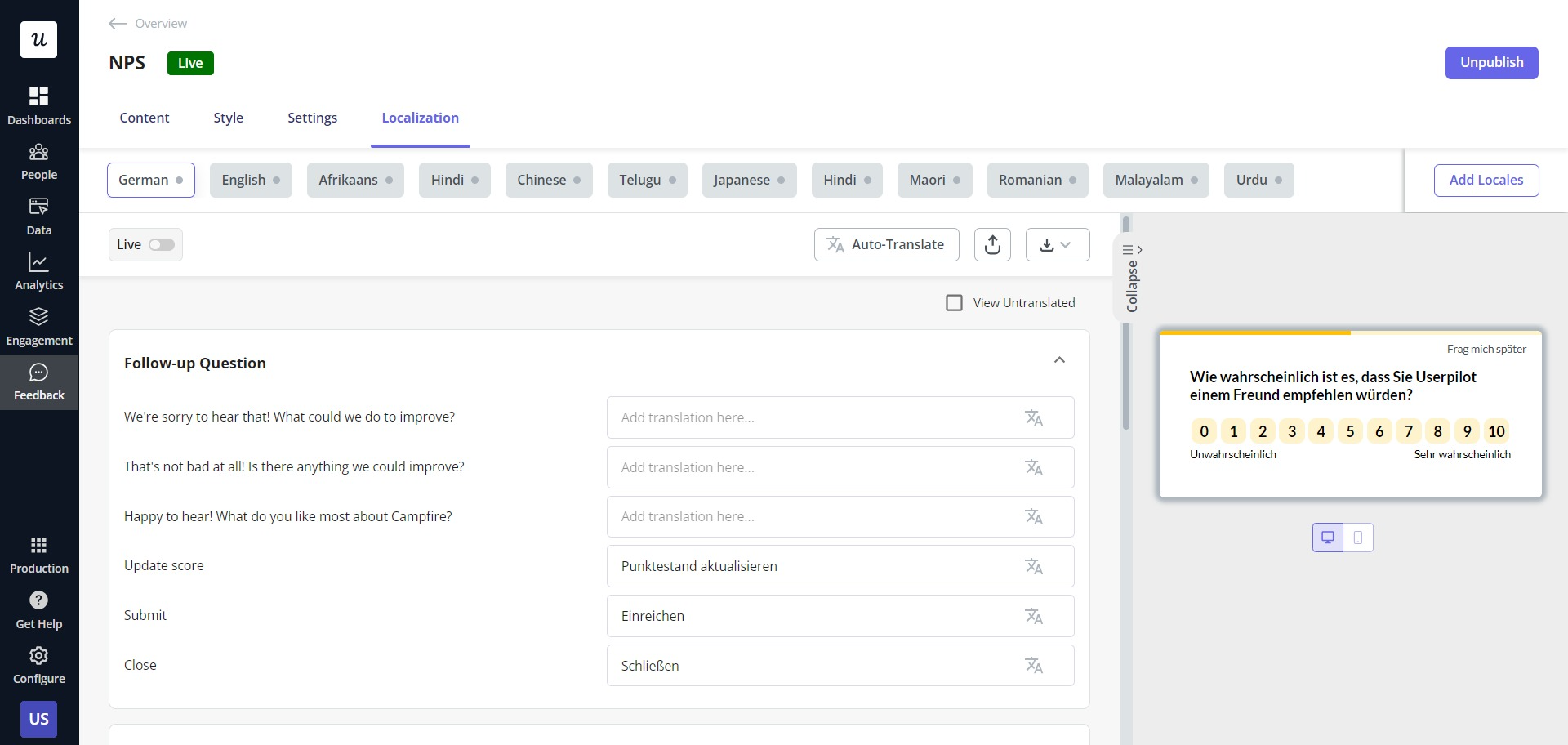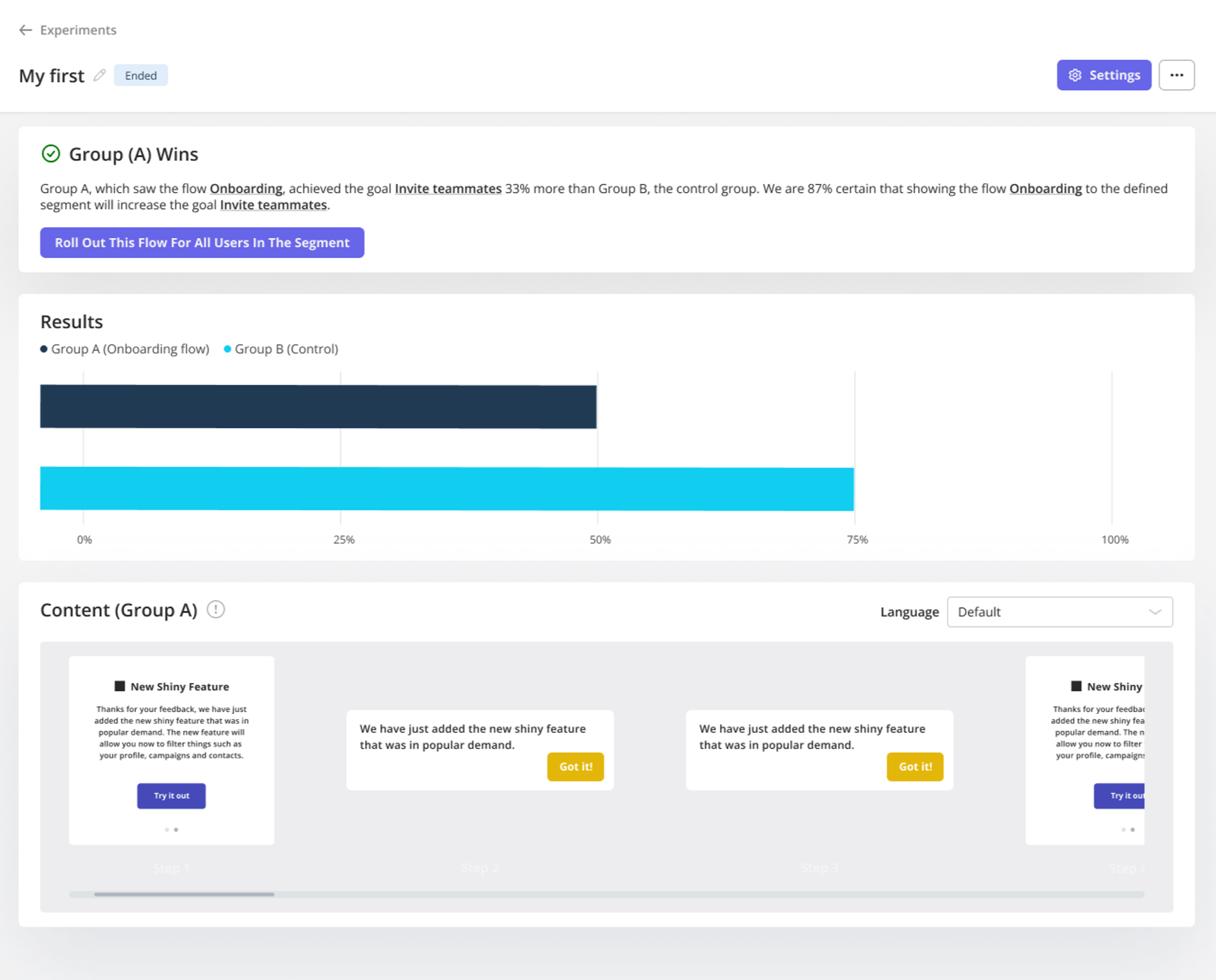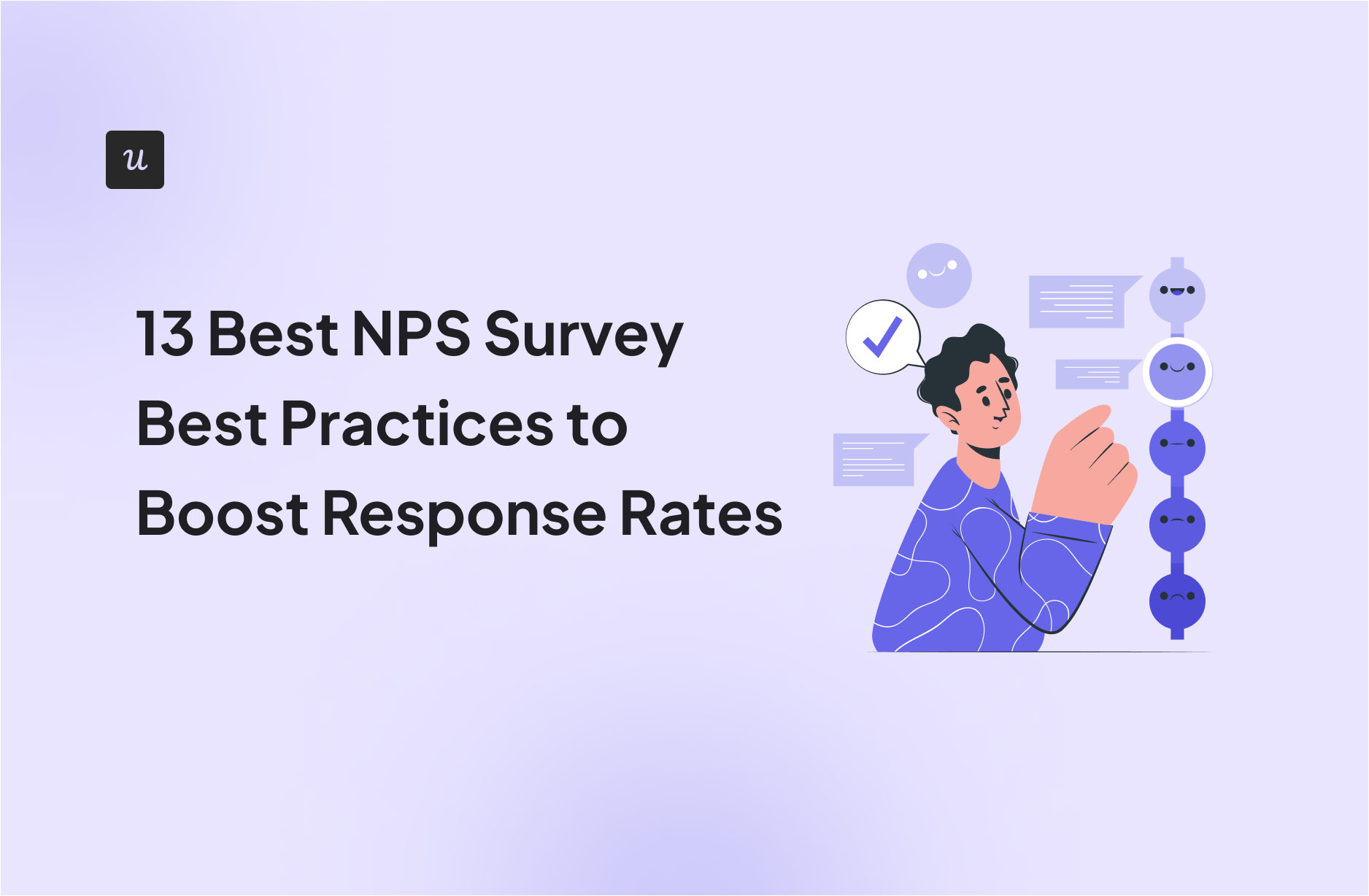
Having a hard time understanding what your customers want?
This is partly because most companies have shifted entirely to a data-driven approach instead of simply talking to their customers for feedback. However, data isn’t always the answer since it lacks any qualitative insights about customer sentiment, desired improvements, likelihood of referral, and so on.
But what’s the cost of ignoring all this customer feedback? There’s increased churn, with 56% of customers quietly switching after a negative customer experience without providing feedback first.
Plus, dissatisfied customers generate negative word-of-mouth for your brand. This matters because 96% of customers look at customer reviews before choosing a product, especially negative ones.
Fortunately, there are many ways to avoid these consequences, such as prioritizing customer feedback for starters. And the simplest way to do that is with Net Promoter Score (NPS) surveys.
Try Userpilot Now
See Why 1,000+ Teams Choose Userpilot

What is a Net Promoter Score (NPS) survey?
Net Promoter Score is a type of survey used to measure the likelihood of user referrals on a scale of 0 to 10. Typically, NPS surveys include the following two questions:
- How likely are users to recommend your product to their friends or colleagues?
- A qualitative follow-up question to understand why users chose their score.
But don’t let the simplicity of the survey fool you. It’s an incredibly powerful metric, useful for gauging overall customer satisfaction and loyalty to your product.
In fact, Fred Reichheld, creator of the Net Promoter Score system, calls NPS the “one number you need to grow“. As per his research, the higher your NPS score is, the faster your company grows.
NPS surveys work well because they’re simple, quick to complete, and provide clear insights into customer satisfaction.
What are the two types of NPS surveys?
When calculating your NPS score, there are two approaches you can take:
- Relationship NPS survey: Measures customer loyalty and feelings towards your company and its overall performance.
- Transactional NPS survey: Captures feedback after specific interactions or touchpoints, like after trying out a new feature. Useful for understanding customer satisfaction with specific functions and product features.
Why NPS response rates matter
- More accurate representation: Greater survey responses include a broader spectrum of all customer opinions instead of just a few loyal customers skewing the results.
- Better product decisions: With more reliable NPS data, you can make informed decisions that benefit all your users.
- Increased retention: These product improvements lead to better customer experiences and, ultimately, increased customer retention.
But you only unlock these benefits if you focus on improving your NPS response rates in the first place. Because imagine the flip side where you don’t have enough NPS data. Your decisions will be based on incomplete insights, leading to incorrect conclusions and, eventually, higher churn.
So, to collect enough NPS data, you first need to go back to the drawing board and design effective NPS surveys.
13 NPS survey best practices for your SaaS
Customers today are tired of filling in endless surveys. If the survey is too long, complicated, or just boring, 67% of respondents will simply abandon it midway.
That’s where these NPS survey best practices come in. They’ll show you how to reduce friction in your survey in every way possible, optimizing it for greater response rates.
1. Optimize your NPS survey timing
Time your NPS survey right for maximum engagement and increased responses. For instance, use tools like Userpilot to set up triggers for automatically sending surveys after certain actions, like successful feature adoption or task completion.
Otherwise, if you send it too early, users won’t have enough experience to base their rating on. Similarly, if you send it too late, users won’t remember how their experience went, resulting in inaccurate responses.
2. Design a user-friendly Net Promoter Score survey
The goal of your NPS survey is to get users from point A to point B as seamlessly as possible without triggering any survey fatigue.
This requires keeping the survey short and concise, making it quick and frictionless to complete. Here are small changes you can start with to accomplish this:
- Use simple language.
- Clearly label instructions.
- Minimize the number of required fields.
- Add progress indicators to show users how far they’ve come.
- Incorporate a visually appealing survey design that isn’t too text-heavy.
Userpilot can help with this, providing pre-made templates to choose from or letting you build entirely customizable ones. You can add your logo, customize the color theme, tailor question formats to match your brand’s voice, and more.
Create, customize, and analyze NPS surveys with Userpilot, along with targeting specific users and easily visualizing responses.
3. Choose your NPS survey distribution method carefully
Users are most engaged when they’re in-app, resulting in an average response rate of 92% to in-app interactions.
So, if you’re looking for higher response rates, in-app surveys are the way to go. They’re more contextually relevant since they’re immediately sent after a key customer interaction. This way, you can capture timely and accurate feedback from users while the experience is still fresh in their minds.
However, if the goal is to get broader feedback or follow up with certain user segments, then pick email surveys. For example, you’d use email surveys to bring back disengaged users. Sending them in-app surveys wouldn’t make sense since these users aren’t logging into your app in the first place.
In-app NPS surveys capture feedback during active usage, offering more context, while email surveys can reach less engaged users.
4. Personalize your surveys for different customer segments
Which one sounds better?
“How likely are you to recommend this feature?” vs. “Hey Sara, congratulations on generating your first report! On a scale of 0-10, how likely are you to recommend this feature to your team?”
We all know the second question just feels better. More human, targeted, and relevant, creating a better customer experience. And more likely to get a response, too. The research backs it up: Personalizing surveys can improve response rates by 48% at times.
So, tailor your survey questions and messaging for specific customer segments based on their demographics, usage patterns, subscription tiers, etc. Try Userpilot for building these segments, choosing between varying criteria like customer loyalty or user engagement levels.
Create hyper-targeted user segments in Userpilot using advanced filters based on user data, behavior, and engagement.
5. Localize your NPS surveys
Offering surveys in users’ native languages helps them understand the content better, maximizing the likelihood of responses.
Plus, it shows respect and inclusivity for cultural diversity and translates into a more seamless customer experience. But localizing your surveys doesn’t just improve customer satisfaction. It boosts revenue too, with 84% of businesses enjoying greater revenue growth from localization.
However, manually translating your NPS surveys is an unnecessarily time-consuming task. Instead, take the smart, error-free route and use Userpilot to automatically localize customer experiences.
Localize surveys in Userpilot by translating content into 32 languages, either automatically or manually, based on user preferences.
6. Look for trends in the responses and tag them
Simply calculating your NPS score and collecting customer feedback isn’t enough. You also need to act on the feedback.
This means tagging and categorizing all the qualitative responses to identify any recurring themes and patterns.
For example, you may notice a trend of multiple users mentioning “unintuitive UI” in their qualitative feedback. So you can tag these responses under “intuitiveness” or categorize them under “performance issues”. This way, it becomes easier to pinpoint improvement areas and prioritize action items for each of the three segments: promoters, passives, and detractors.
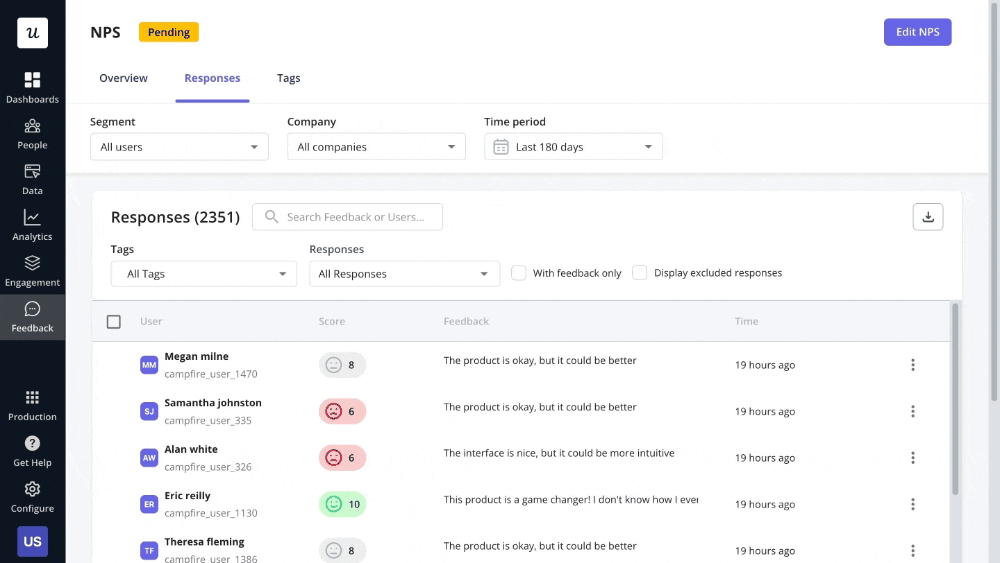
Group similar responses via response tagging in Userpilot to easily identify customer pain points and prioritize improvements.
7. A/B test your NPS surveys to boost response rates
A/B testing compares two versions of a webpage or app design to determine which performs better.
For NPS surveys, the variations don’t have to be too big. Experiment with different question formats, message tones, and delivery times to maximize response rates.
Play around with the survey design, too. For example, see what gets a higher completion rate, like a simple text-only question or a question with a visual slider scale.
Experimenting like this allows you to identify what resonates best with your audience and make changes accordingly. If you’re new to A/B testing, you can easily start with Userpilot. It offers two versions of an A/B test along with controlled multivariate tests.
Run A/B tests in Userpilot to measure the impact of in-app changes, measure performance, and optimize accordingly.
8. Use the right NPS survey tool
Choose a complete customer survey solution that lets you build, capture, analyze, and act on your NPS data. To narrow down the search, look for a tool that offers all these key features:
- Customization to tailor survey questions and design.
- Integration with your existing workflow.
- Survey analytics to understand NPS data for actionable insights.
- Survey delivery options across several platforms, e.g., email, SMS, and in-app.
- Data security compliance and privacy features.
One tool worth considering is Userpilot, which simplifies NPS survey creation, deployment, and analysis. Let’s look at an example of the tool in action.
CYBERIZ, an e-commerce platform, redesigned its admin panel to improve the customer experience. But there was no way of knowing whether the redesign was successful.
So CYBERIZ leveraged Userpilot’s in-app surveys, localized in the right language, to measure customer satisfaction with the new design. CYBERIZ also used the surveys to identify beta-tester recruitment, so the product team didn’t have to compile a list of testers manually themselves.
Quickly recruit testers by streamlining the process with Userpilot’s in-app surveys for targeted participant collection.
9. Optimize your surveys for a smooth mobile experience
Over 95% of users now use a mobile phone to go online. And mobile phones account for 63% of the world’s web traffic. These usage trends mean many users now access your SaaS products on their smartphones or tablets.
So, to increase responses and reach a broader audience, make sure your surveys are fully responsive and optimized for mobile devices. One way to seamlessly integrate mobile-friendly surveys is by using Userpilot for mobile apps.
This way, you can create mobile onboarding flows, feature announcements, and surveys, and perform mobile analytics, all without coding. So you can track the behavior of mobile users and personalize their experiences through advanced segmentation.
10. Close the feedback loop
Closing the feedback loop means acknowledging and responding directly to customer feedback. Especially negative feedback, with 53% of customers expecting a reply within a week.
Getting back to customers demonstrates that you’re listening and taking action to address their concerns. Once customers see that you value their opinions, they feel more connected to your brand, which translates into greater customer loyalty.
11. Offer incentives for participating (judiciously)
Research shows that offering an incentive can boost survey responses by 30% at times. These can be small incentives, such as discounts or exclusive content, to encourage greater participation.
However, avoid over-reliance on these incentives, as they can attract low-quality feedback from users outside of your target audience.
Instead, use these incentives for specific customer segments. For example, an extended trial period is great for the at-risk segment, motivating them to engage with your product more and provide feedback.
12. Provide context and a clear explanation for the “why” of the survey
Users are more likely to respond if they’re given some context about what the survey is for.
So, explain how you’ll use the customer’s feedback and highlight the benefits of participating in the survey.
Consider something simple like “Your feedback helps us better prioritize product improvements. Complete this quick survey to help perfect our next feature rollout, and enjoy early access once it’s ready!” This emphasizes the impact of their feedback and entices users to participate in exchange for exclusive access.
13. Implement effective follow-up strategies
Lastly, always remember to follow up. If you don’t, customers might feel ignored, like their voice doesn’t matter, ultimately damaging your brand reputation.
To make the follow-ups relevant, try personalizing them based on NPS scores. For example, here are some follow-up questions you could ask for each of the three categories:
- Promoters: “We’re thrilled you’re enjoying the analytics feature. Is there anything else we can do to make your experience even better?”
- Passives: “Thank you for your feedback! What improvements would make this analytics feature more valuable for you?”
- Detractors: “We’re sorry to hear you’re not satisfied with the analytics feature. Could you provide more details on what went wrong so we can work on fixing it?”
NPS survey template: What questions can I ask?
That’s because there is no one-size-fits-all survey template. Instead, the structure depends on several factors, such as:
- Targeted customer segment.
- Customer journey touchpoint.
- Triggering event (e.g., free trial expiry or customer support interaction).
- Behavior over time.
- Customer pain points.
- Survey distribution channel.
In addition to these, there’s also the matter of what type of questions to use. Let’s go over the options to determine which one to add to your survey.
Rating survey question examples
The rating scale is commonly used as the main question in many surveys, like NPS, customer effort score (CES), and customer satisfaction score (CSAT).
- Ask customers to rate your company. E.g., “On a scale of 1 to 10, how would you rate your overall experience with our company?“
- Ask your customers to rate a specific experience. E.g., “On a scale of 1 to 7, how satisfied are you with the quality of our customer support?“
Open-ended survey question examples
This question type is mostly used to ask follow-up questions and gather in-depth qualitative feedback.
- Ask customers how you can improve their experience. E.g., “What could make the onboarding process better?”
- Find out why they gave a specific survey ranking. E.g., “Can you share why you rated your interaction as a 7?“
- Ask what problem customers are looking to solve. E.g., “What specific challenges are you hoping to address using our product?“
Qualitative follow-up questions provide deeper insights into NPS scores, helping identify specific reasons behind customer satisfaction or dissatisfaction.
Get the most from your NPS surveys
These NPS survey best practices are great for improving response rates. But simply gathering customer feedback isn’t enough.
NPS is a tool for sparking change, and every response is an opportunity to build stronger relationships, refine your product, and create brand advocates.
So, as you optimize your NPS strategy, remember that every survey response is a conversation, not just a number.
Ready to launch your own NPS survey to collect deeper insights into customer loyalty? Book a Userpilot demo today and explore the library of survey templates available, design customizability options, content localization, and more.
FAQ
What is a good NPS score?
What counts as a “good” NPS score will keep changing based on your business type, lifecycle stage, etc. For example, within the SaaS industry, the benchmark for the average score is 36. So, anything beyond 36 would be considered a good Net Promoter Score.
How often should I send NPS surveys?
Best practice dictates sending relationship NPS surveys every quarter or semi-annually. This helps maintain consistent customer feedback while not annoying them by reaching out too often.
Transactional NPS surveys are sent immediately after specific interactions when the experience is still fresh in the customer’s mind. This ensures more accurate feedback that isn’t influenced by time or memory bias.
How do I calculate NPS?
Here are the steps for calculating your NPS score:
- Divide survey respondents into 3 categories: Detractors (0 to 6), Passives (7 or 8), or Promoters (9 or 10).
- Calculate the percentages for each category.
- Apply the NPS formula = [% Promoters] – [% Detractors].
NPS score calculation considers both promoters and detractors, offering an accurate snapshot of customer satisfaction and loyalty trends.
What should I do with negative NPS feedback?
Start by acknowledging the negative customer sentiment expressed so the customer feels heard. Next, investigate the reason behind such feedback and take action where possible with targeted improvements.
Lastly, always close the feedback loop by communicating the resolution to the customer. This lets customers know you value their input and are committed to improving their customer experience.

